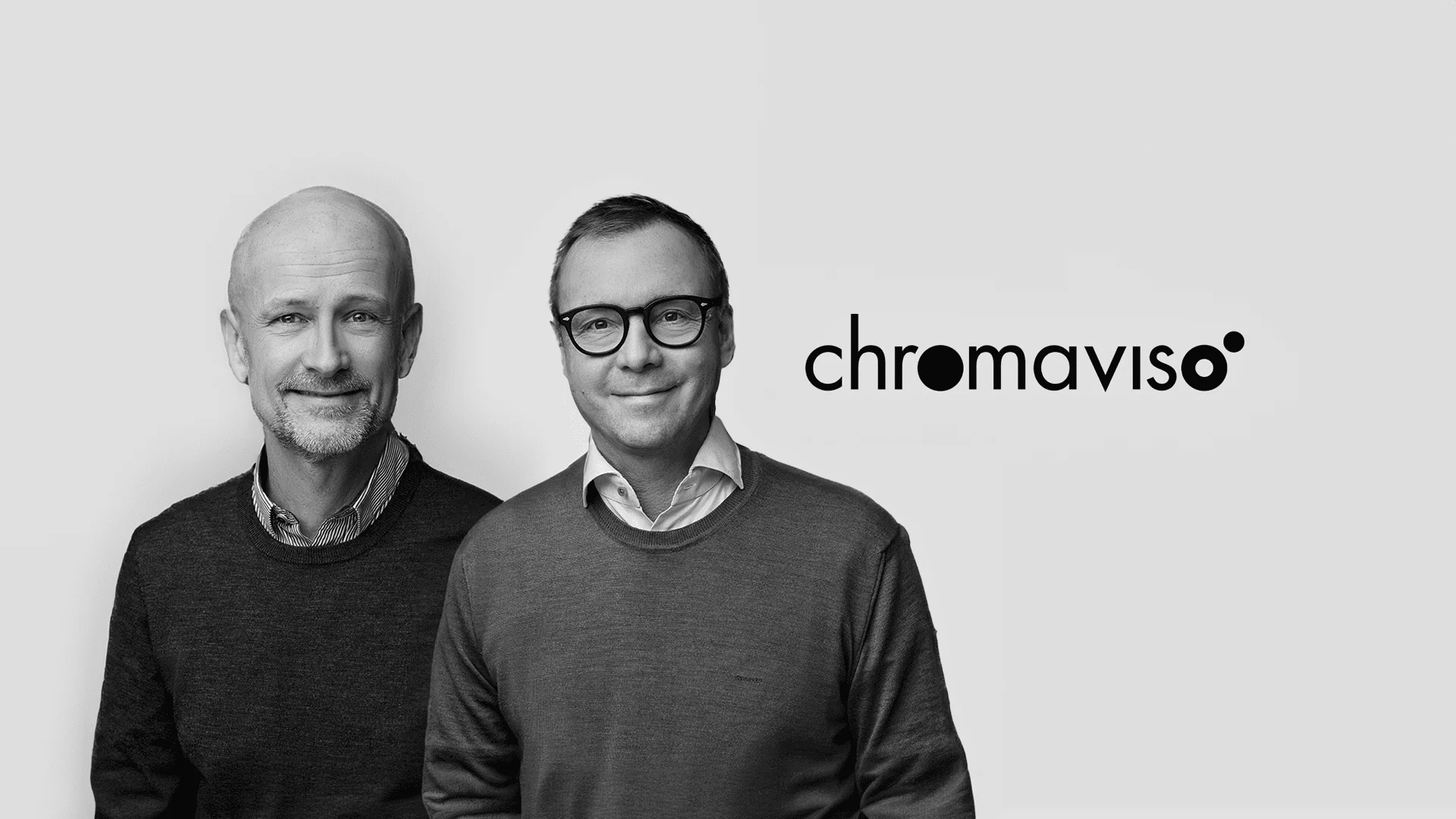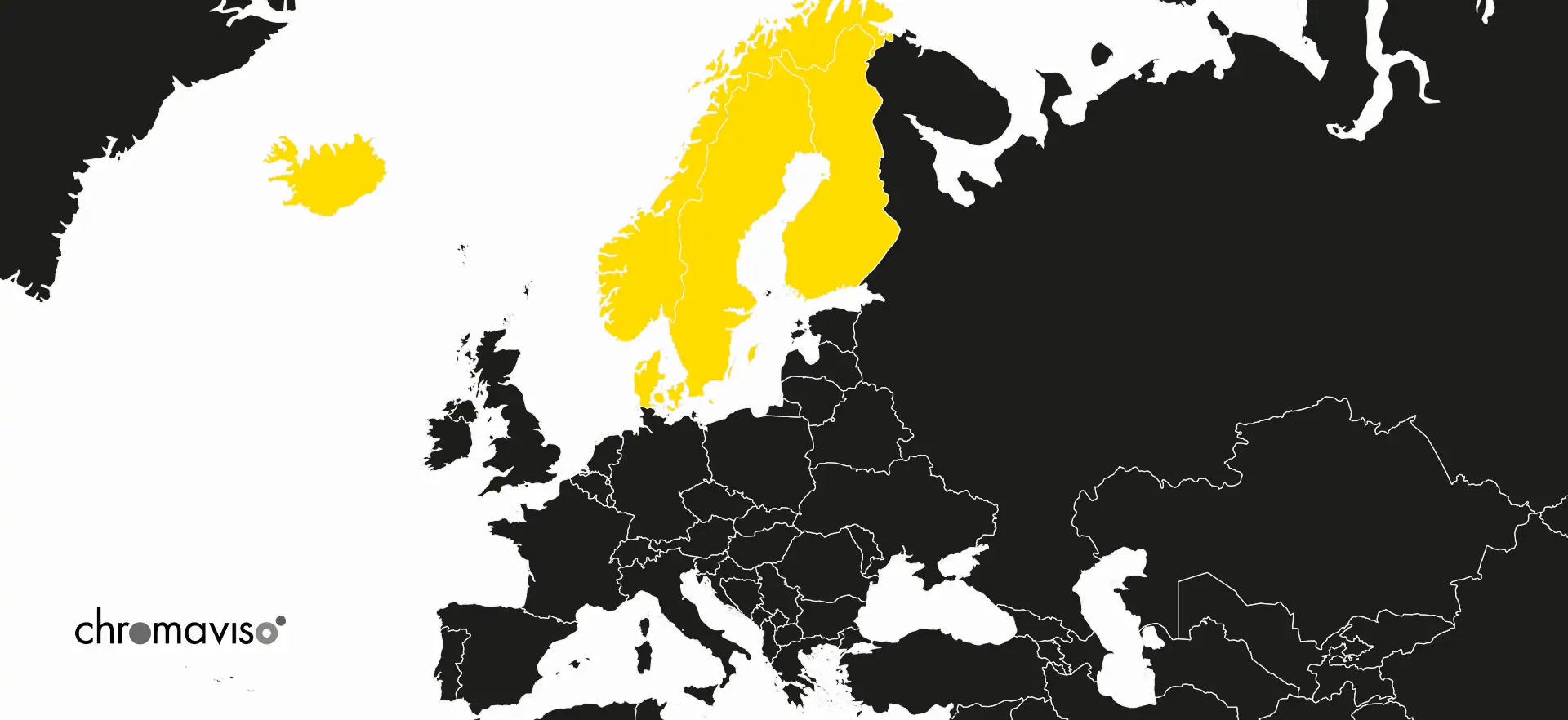« The circadian lighting project was born. »
Claus Puggaard and Anders Kryger

« Chromaviso was founded by two students. »
Anders Kryger and Claus Puggaard both come from the lighting industry. Along with chief physician, Jesper Durup of Odense University Hospital, they came together around a common project to improve the working environment of hospitals through lighting.
One day, Anders and Claus attend the Society for Light Treatment and Biological Rhythms (SLTBR) conference – a scientific network focused on the effects of light on the body and the chronobiology of psychiatric and other medical disorders. This conference marked the beginning of their journey to improve their knowledge of light and circadian rhythms. It was during this conference that the idea and the project on circadian lighting were born. In collaboration with Aarhus University Hospital (AUH), they then embarked on the development of a pilot study and tests in the AUH clinical environment.
How can you live without sunlight?
The reason for circadian lighting is that people today spend up to 90% of their time indoors—sometimes even more, in the case of patients of psychiatric hospitals who must stay in their room. Indoors, there is no circadian rhythm and the light remains the same throughout the day and night unless turned off. However, the human body depends on light to decode the times of day and night, when it needs energy and when it needs to rest and recover. Chromaviso had the lightbulb idea to create specially designed artificial lighting that changes during the day and night and therefore imitates natural light to support circadian rhythms.
The term “circadian lighting” might sound like a luxury good, but it’s quite the opposite.
Respecting the circadian cycle is a fundamental human need that guarantees our health. Not having access to the right light throughout the day and night creates health risks, both in the short and long term. Nursing staff report that they sleep better, feel more rested and more energetic, suffer less from depression and are less tired after night shifts. Absenteeism decreases, the work environment improves and there are fewer headaches. For all of these reasons, effective lighting that stimulates the circadian rhythm is a necessity.
Our economic model is based on three pillars: technology, innovation and research.
Since the beginning of the adventure, these three pillars have played a central role in the development of Chromaviso. In 2013, we started by partnering with AUH and Rigshospitalet — major research institutes focused on circadian lighting — and launched a major research study togehther. In collaboration with users, the company has developed innovative lighting solutions based on cutting-edge technology, which has proven itself in clinical and practical studies. Another project co-financed by the AAD and the European Union was recently launched with the ambition of developing and improving lighting in retirement homes in Europe. Today, Chromaviso is the market leader in Scandinavia, with over three thousand installations in over one hundred and thirty hospitals. The ambition now is to develop this system for the general public, for workplaces outside the health sector.
Impact Partners mainly supported us on the financial side of growth.
By providing Chromaviso with the financial means for its development, Impact Partners has helped open the doors for a European expansion. The company has begun discussions with the Paris Brain Institute in order to continue the development of the activity. Chromaviso has also started looking into centres for young people suffering from insomnia or anxiety, which would open up a new market. The societal impact is obvious.
Chromaviso’s circadian lighting system allows patients to reduce their doses of medication, and for professionals to take better care of their patients.
Continuous research and positive clinical feedback are essential to development, allowing Chromaviso to improve month-onmonth. The positive effects have been proven in hospitals, so now other players are interested in entering the market. However, Chromaviso is protected by several barriers to entry, among these: installation time, the investment cost, and the knowledge needed to develop. To accelerate deployment, the goal is to create a partnership platform with local players in Europe. For this, our company needs to simplify their technology to make it more accessible and easier to install.
Chromaviso started in Denmark, then expanded to Norway, Sweden and Belgium. Today it is looking towards Germany.

